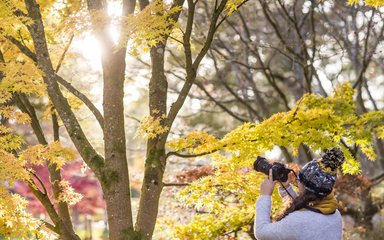Uncover the science behind the changing season and discover why leaves change colour in autumn.
Phase one: green
The green leaves you see during summer already contain most of the colours of autumn! Throughout most of the year, the colours of autumn are ‘covered’ by the dominant green chlorophyll.
Chlorophyll helps trees to absorb the energy of the sunlight - the tree is essentially 'charging' during the summer months. Chlorophyll changes carbon dioxide (CO2) + water (H2O) into sugars which feed the tree.
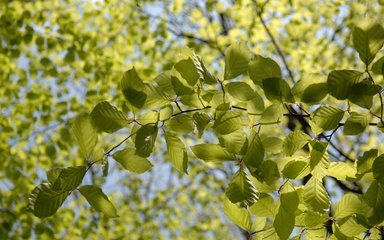
Why is chlorophyll green?
Chlorophyll is green because it allows trees to absorb blue and yellow wavelengths from the light, but not the green which is reflected back.
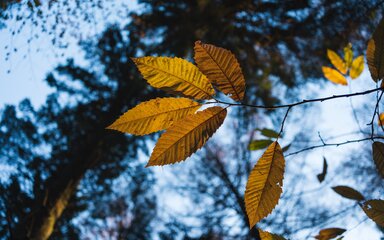
Phase two: turning yellow
As the weather cools in autumn, the leaves start to receive less sunlight.
Less sunlight triggers chlorophyll to break down, revealing the new, colourful pigments underneath and treating us to beautiful autumn yellows and oranges.
The yellows and oranges which were previously masked by chlorophyll are called xanthophylls and carotenoids. These pigments are present year-round in the leaves, but are usually masked by the green chlorophyll.
Phase three: fiery reds
In some species and in certain special years, you'll see another stage of colour as the leaves turn a vibrant red. This is caused by anthocyanins.
These reds are produced in years when lots of sunlight and dry weather have increased the concentration of sugar in tree sap, triggering the tree to release anthocyanins in an attempt to grab the last of the energy from its leaves, powering it up to get through the winter.
Interestingly, very cold weather, acidic soils, and other stress factors occasionally trigger higher levels of anthocyanins to be produced too.
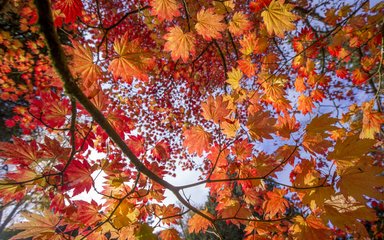
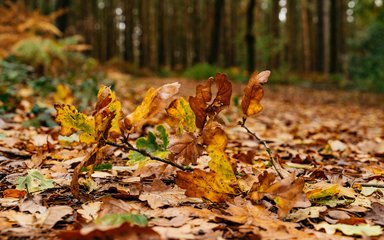
Phase four: the fall
At the end of this colourful process, leaves die. Trees shed their dead leaves because they are no longer able to get energy from them. By shedding their leaves, trees are able to survive because they make room for new growth in the spring.
Trees are great at recycling! Fallen leaves contribute to the health of the forest after they fall, through decomposition. Though they have been released by the tree, some carbohydrates and sugars remain in the leaves. On the forest floor, these carbohydrates and sugars give nutrition for 'feeders' to flourish. Once fungi and bacteria have begun to break down the leaves, insects get in on the dinner party too.
Once the leaves are broken down, they provide a source of fibre which helps the soil retain moisture and improve drainage.

